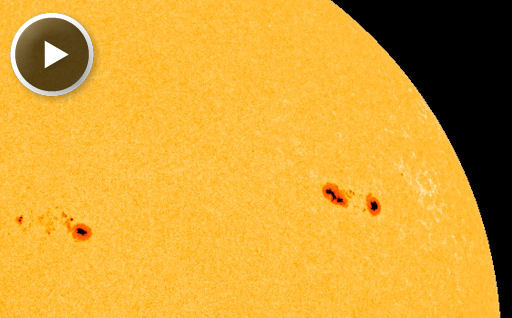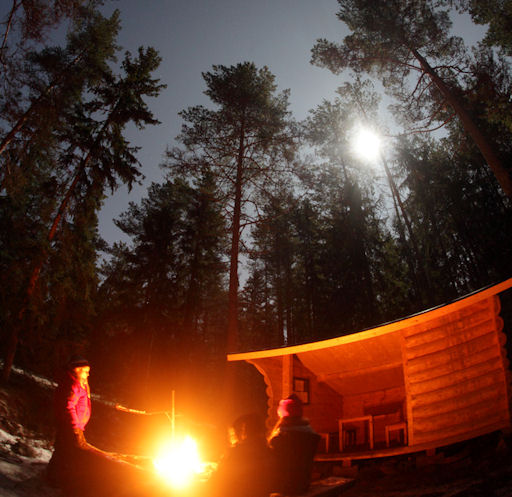WEEKEND SUNSPOT: Over the weekend, sunspot AR1393 tripled in size, swelling into an active region more than five times as wide as Earth. NASA's Solar Dynamics Observatory recorded the two-day expansion:
Despite the sunspot's rapid growth, solar activity remains low. Like all the other "active" regions on the solar disk, AR1393 has a simple, stable magnetic field that poses little threat for strong eruptions. NOAA forecasters say the chance of an X-class flare in the next 24 hours is no more than 1%. Stay tuned for quiet.
CANIS LUNUS? According to folklore, this week's full Moon is the Wolf Moon. Native Americans named it after packs of wolves they once heard singing in the deep snows of January. Folklore, however, doesn't always translate:
"Last night in Sweden, we heard no wolves," reports photographer P-M Hedén, "but we heard something else totally amazing - the song of the ice in the Dalriver!" He and his children enjoyed the Dalälven Moon around a campfire in Sweden's Färnebofjärdens National Park:
In Italy, the Wolf Moon reminded onlookers of a street lamp, while in Spain bright moonlight banished the night altogether. Even in New York, the Moon seemed more akin to waterfowl than to the wolf.
Which moon did you see? Browse the links for more options: from Nenne Åman of Arjeplog, Sweden; from Stefano De Rosa of Serralunga d'Alba, Italy; from Jim Saueressig II of Burlington, Kansas; from Kevin Jung of Lowell Township, Michigan; from Lyle Anderson of Duluth, MN; from Paul Beebe of Upsala, Ontario, Canada; from Kevin Witman of Cochranville, Pennsylvania

![]()
Solar wind
speed: 422.4 km/sec
density: 2.5 protons/cm3
explanation | more data
Updated: Today at 1456 UT
![]()
X-ray Solar Flares
6-hr max: C1 1042 UT Jan09
24-hr: C1 1042 UT Jan09
explanation | more data
Updated: Today at: 1400 UT
![]()
![]()
![]()
Daily Sun: 09 Jan 12
![]()
![]()
Solar activity is low despite the presence of several large spots on the solar disk. Credit: SDO/HMI
![]()
![]()
![]()
Sunspot number: 90
What is the sunspot number?
Updated 08 Jan 2012
Spotless Days
Current Stretch: 0 days
2012 total: 0 days (0%)
2011 total: 2 days (<1%)
2010 total: 51 days (14%)
2009 total: 260 days (71%)
Since 2004: 821 days
Typical Solar Min: 486 days
Updated 08 Jan 2012
The Radio Sun
10.7 cm flux: 136 sfu
explanation | more data
Updated 08 Jan 2012
![]()
![]()
![]()
Current Auroral Oval:
![]()
Switch to: Europe, USA, New Zealand, Antarctica
Credit: NOAA/POES
![]()
![]()
![]()
Planetary K-index
Now: Kp= 2 quiet
24-hr max: Kp= 2 quiet
explanation | more data
![]()
Interplanetary Mag. Field
Btotal: 5.9 nT
Bz: 1.9 nT north
explanation | more data
Updated: Today at 1458 UT
![]()
![]()
![]()
Coronal Holes: 09 Jan 12
![]()
![]()
A minor solar wind stream flowing from the indicated coronal hole should reach Earth on Jan. 13-14. Credit: SDO/AIA.






